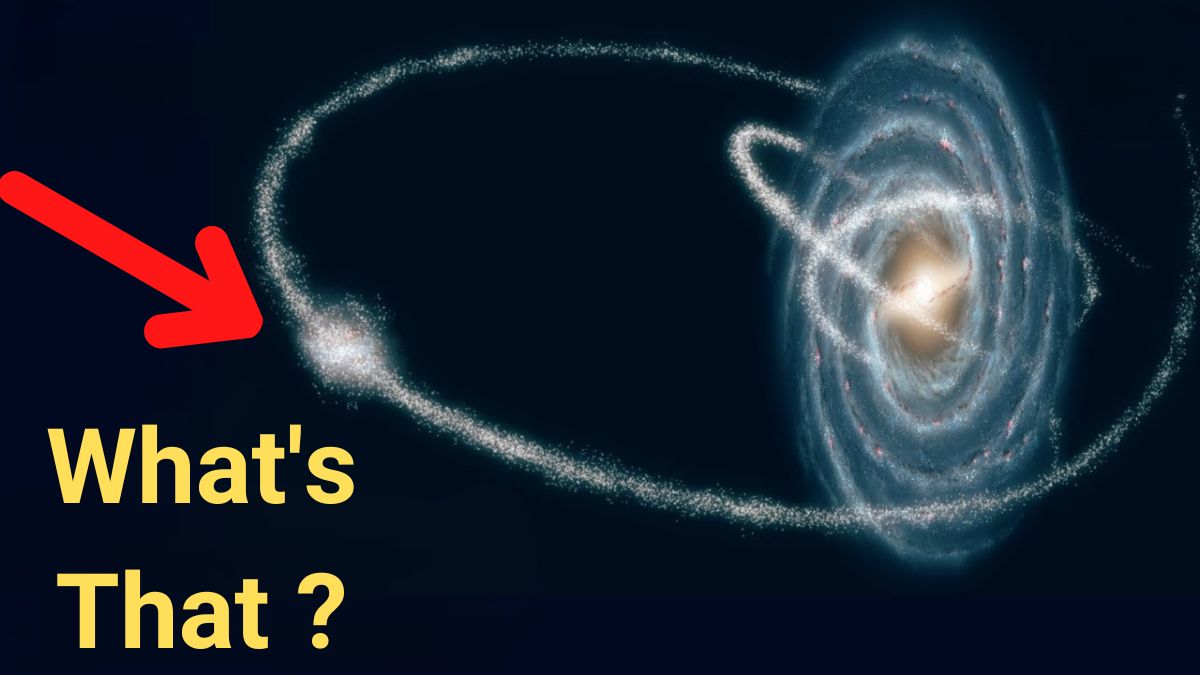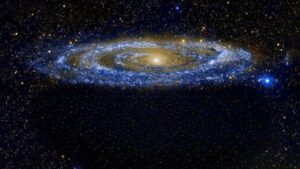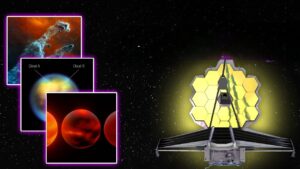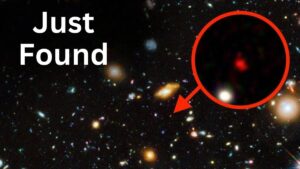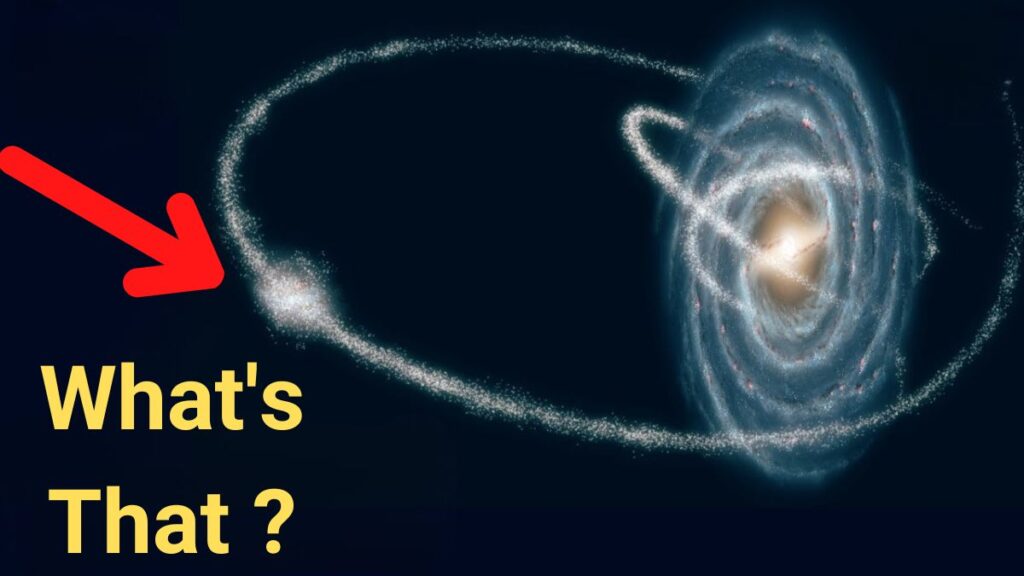
You may have been informed that the milky way galaxy will collide with the andromeda galaxy in the next 4 to 5 billion years, merging completely with it in the next 6 billion years.
However, our galaxy will not be the first to collide with another galaxy.
Of the at least 80 known galaxies in the local group, the milky way is the second-largest.
Satellite galaxies that orbit the massive ones eventually split up and merge with the massive ones.
One of the most notable mergers between the milky way and the Sagittarius dwarf galaxy is one with several satellite galaxies.
Astronomers have discovered evidence that Sagittarius has passed through the Milky Way three times over six billion years, suggesting that this could be the origin of our existence.
But how did researchers come up with this fascinating discovery?
How do they know how many times the milky way passed through the dwarf galaxy Sagittarius?
Last but not least, why is Sagittarius regarded as the cause of the existence of life on Earth?
A merger may or may not occur when two galaxies interact.
Take, for instance, the tadpole galaxy, which is located 420 million light-years away in the Draco constellation.
A 280,000 light-year-long star trail is this galaxy’s most striking feature.
Astronomers have discovered evidence that, from Earth’s perspective, about 100 million years ago, a compact invader galaxy crossed in front of the tadpole galaxy from left to right.
Tidal forces pulled the stars, gases, and dust from the spiral galaxy during this close encounter, resulting in the distinctive tail.
The Milky Way’s small satellite galaxies and star clusters are frequently torn apart by their gravitational potential, leaving behind stars spread across the sky.
The parent object’s history is documented in these stellar streams.
In a method known as galactic archaeology, they can be studied to learn about the evolution of the Milky Way.
Additionally, this is the key to determining what took place in the Milky Way billions of years ago.
The Hertzsprung-Russell diagram, a scatter graph that shows the relationship between a star’s surface temperature and luminosity, is the most important tool for studying stellar astrophysics.
This graph lets you plot every star in the universe where the star’s surface temperature decreases along the x-axis and brightness is represented by the y-axis.
In this diagram, four main groups of stars can be plotted.
The first is the main sequence, which includes all of the stars in their core that are presently converting hydrogen into helium.
During the main sequence phase, the sun is in the middle of the diagram.
When a star leaves the main sequence and moves to the right side of the diagram, it joins the giant stars group.
Then there are the white dwarfs, neutron stars, and supergiant stars, all of which have a higher surface temperature but a lower luminosity.
The Hertzsprung-Russell diagram will show a distinct curve because stars that form simultaneously in the same environment will have the same composition and age. However, they will also have a wide range of masses.
Think about this chart of the heavenly populace for instance.
Lines of varying hues depict the evolution of various star populations.
None of the stars that have formed in the last 25 million years follow a nearly straight line, indicating that they have left the main sequence.
However, the stars that have formed within the last ten billion years exhibit a bump and a distinct curve.
This shows that the majority of these stars are old, have evolved into red giants or hypergiants, and are now located on the right side of the hr diagram.
Astronomers came to the conclusion that the elliptical loop-shaped galaxy entered the milky way three times, first about 5 or 6 billion years ago, then about 2 billion years ago, and finally one billion years ago, after examining the history of the Sagittarius dwarf galaxy’s star formation and the stars in the Sagittarius stream.
Astronomers examined the Gaia data and discovered five peak periods of increased star formation.
The first was Seven billion years ago, the next was 9 billion years ago and recently was 1 billion years ago, roughly when Sagittarius is thought to have passed through the milky way’s disc.
Therefore, the milky way eventually reached equilibrium, a balanced state with a constant rate of star formation, following an initial violent epoch of star formation.
Sagittarius, on the other hand, entered the picture and shattered this equilibrium, causing all of the previously still gas and dust in the larger galaxy to slosh about like water ripples.
These ripples would empty some parts of the Milky Way while increasing dust and gas concentrations in others.
The subsequent star formation would be sparked by the high density of material in those regions.
The interactions with Sagittarius resulted in the formation of a significant portion of the stellar mass the Milky Way, which would not have existed otherwise.
If the Sagittarius dwarf hadn’t been caught in the milky way’s gravitational pull and crashed through its disc, it’s also possible that the sun and its planets would not have existed.
Due to the first passage through Sagittarius, the sun formed simultaneously with the formation of stars in the Milky Way.
The Sagittarius stream’s history of star formation was also examined by another group of astronomers.
They were particularly interested in a section of the stream where there is a brighter and a darker section.
They wanted to know if the two streams came from the same dwarf galaxy in Sagittarius and, if so, why they were so different in brightness.
They discovered that the stars in bright and faint regions have a close relationship between their age and their composition. This means that the stars that were being formed at any given time had the same composition and were formed in the same environment.
They also found that this relationship is similar to that of the Sagittarius dwarf’s stellar clusters, proving that the galaxy was stripped of both the bright and faint parts of the stream.
The cutoff in the ages of the stars in the two parts of the stream, which spans approximately 8 billion years, indicates that star formation in the Sagittarius dwarf stopped approximately 5 billion years ago.
The destruction of the Sagittarius dwarf was most likely the cause of this sudden halt in star formation!
They were stripped at different times, which explains the variation in brightness.
The history of star formation and the demise of the Sagittarius dwarf galaxy could be deduced from observations of the stars in the Sagittarius stream.
Data from the Gaia spacecraft, which is “silently” revolutionizing astronomy, also made these studies possible.
Additionally, the most recent “Gaia data release 3” is a treasure trove that will alter how we comprehend the universe.
If you enjoyed it, please read more like this and explore this website “SpaceUpper”.
Explore:

